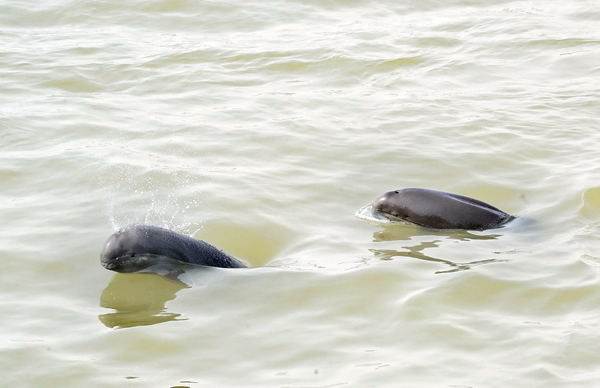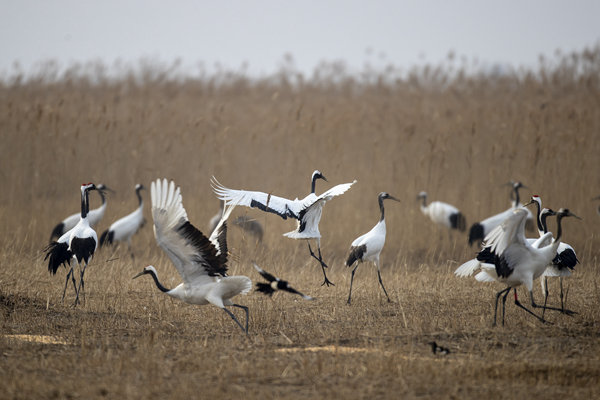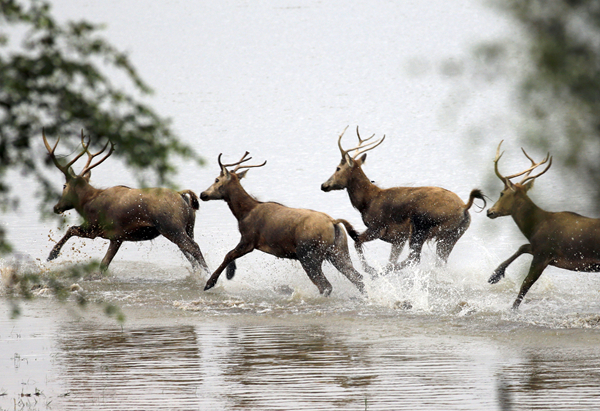China has recently updated the List of Wildlife under Special State Protection by adding 517 species and upscaling 65 species to the first-class protection, thus increasing the total number of species on the list to 980.
The change of the inventory, part of a revision to the Wildlife Protection Law, also means Jiangsu is now home to 157 species on the list, an addition of 48 new species, or up 44%.

(CFP Photo)
The Yangtze finless porpoise, one of the key species to indicate the river’s ecosystem health, has been officially upgraded to first-class status. This is certainly great news for a protected area for the species spanning about 57.3 square kilometers, located in the north of Jiaoshan Park in Zhenjiang City.
This flat wetland was used for agricultural production and aquaculture and also had a film studio in the past. But now the area has been repurposed exclusively for the protection of the endangered species, the largest reserve of its kind along Jiangsu’s coast. In 2020, a study through deep-water instrument detected about 25 Yangtze finless porpoise, said Wu Bin, deputy director of the Natural Resources and Planning Bureau of Zhenjiang City.

(CFP Photo)
Jiangsu's coastal wetlands are an important part of the East Asian-Australasian Flyway (EAAF), which is the most threatened migratory flyway worldwide and boasts the largest number of endangered species. Every year, over 3 million migratory birds use the wetlands as breeding, wintering or refueling sites, including rare and critically endangered species such as red-crowned crane.

(CFP Photo)
One signature project on the coast is the Dafeng National Nature Reserve for Elk in Yancheng City, which has seen the number of elks increasing to 5,681, including a wild population of 1820.
The update has also extended protection of rare bird species threatened by habitat loss, illegal hunting or trade, which will help Jiangsu protect its large number of wild bird species.
During the 13th Five-Year Plan, Jiangsu established more than 100 nature reserves, forest parks, and wetland parks, 15 wildlife rescue centers, and 45 wildlife diseases monitoring stations.
"The restoration of wetlands along the river has provided a good habitat for wildlife and attracted more birds as environment becomes better,” said Wang Haizhen, director of the wildlife and wetland protection management station in Zhenjiang.




















